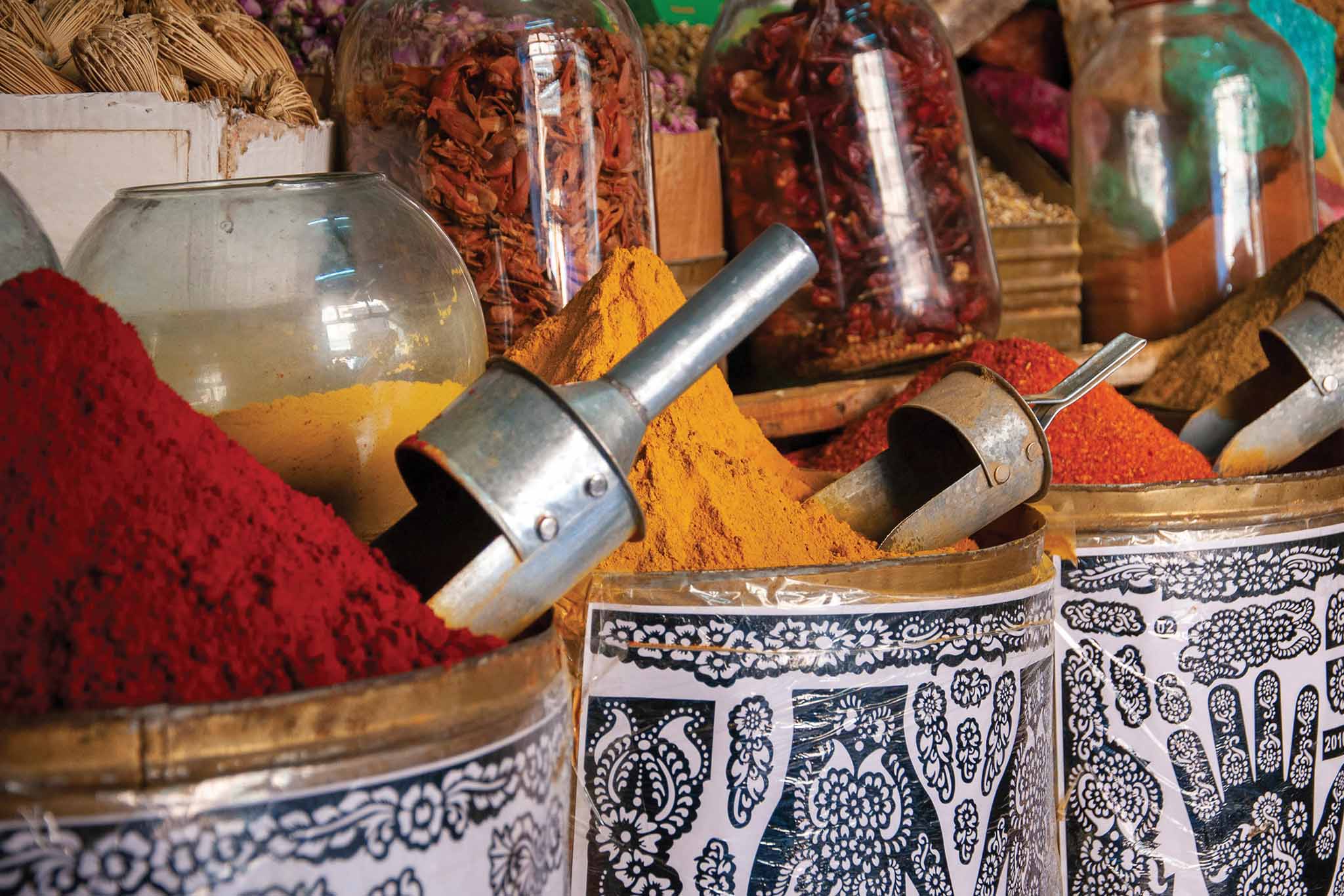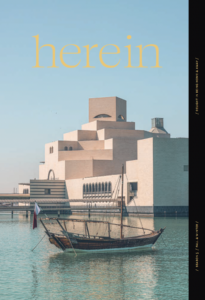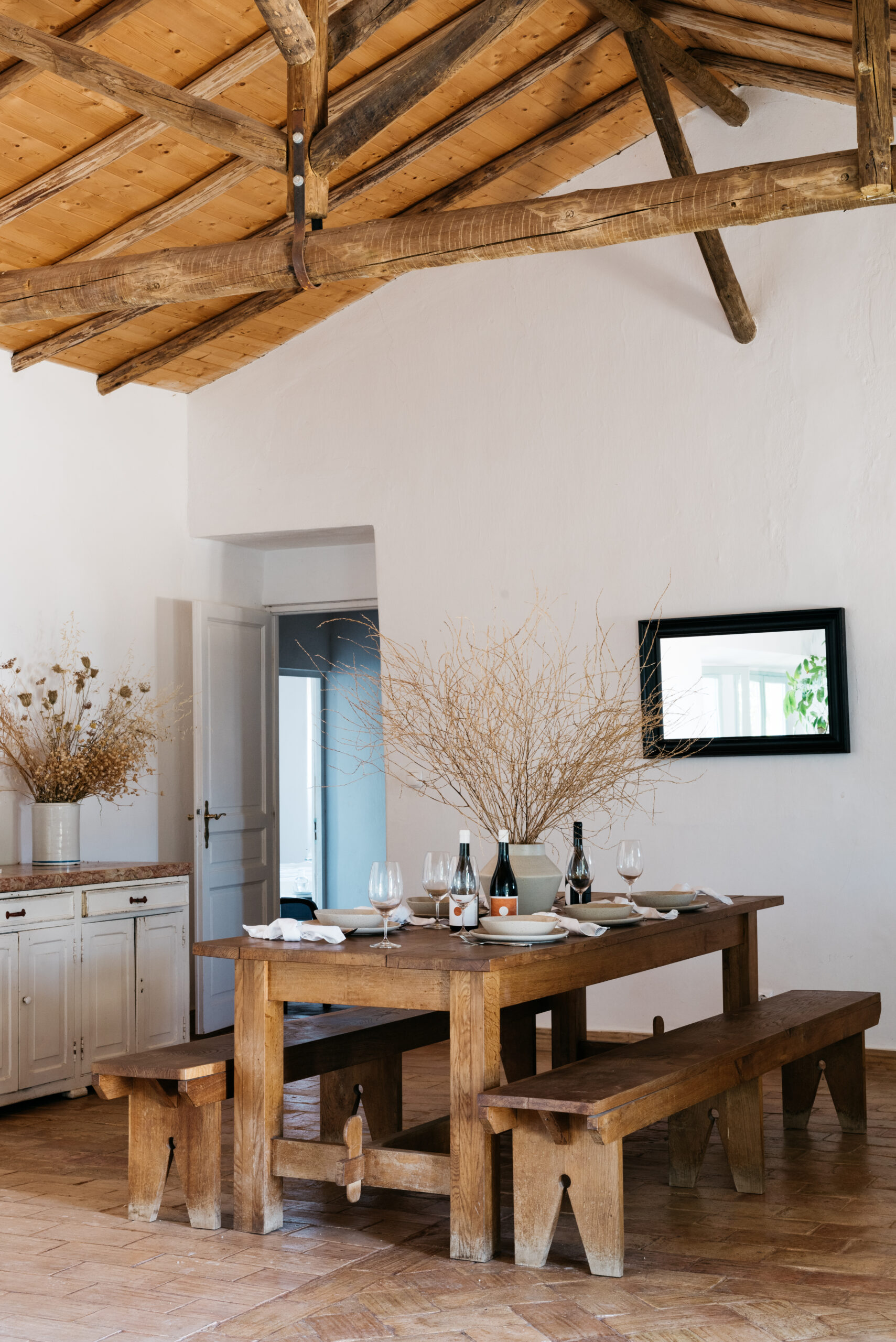Text by Paula Hardy
One of my favorite autumn meals is Morocco’s golden-hued chicken tagine. Much like a stew or casserole, it’s a surprisingly easy dish to make, involving some sautéed onions and carrots topped with chicken, preserved lemon, and sour green olives, and then slow-cooked for an hour. The magic is all in the stock which contains a traditional blend of spices like cinnamon, cumin, and harissa with a good pinch of deep red saffron, the world’s priciest spice. It is the latter that gives the dish its golden color, honeyed aroma, and deliciously intense sweet-savory flavor.
As I catch that first heady whiff of it when I lift the lid of the tagine—the food shares its name with the traditional clay pot it is cooked in—I often think about the ingenuity and extraordinary human effort involved in bringing this taste sensation to my kitchen.
The saffron I most recently bought was from Taliouine, a small village, which sits along a rock-strewn riverbed of Morocco’s awesome Anti-Atlas mountains. To reach it, you have to drive an hour and a half east of the walled city of Taroudant and then climb into the eroded, mineral-rich mountains which turn pink and mauve as the sun sets. It does so early in October and at 4,000 feet, the air quickly turns cold. Everyone gets to bed early here, because they’ll need to be up for the harvest at the first call to prayer, around 4 a.m.

Saffron has been grown here for at least 500 years, brought by Arab and Jewish traders from the eastern Mediterranean and Iran. Iran still produces nearly 90% of the world’s crop, but Moroccan saffron is considered among the world’s best as it contains higher levels of safranal – the organic compound responsible for the spice’s intense floral aroma and superpower antioxidant properties. Talouine’s 20 Amazigh (Berber) saffron-farming families hand-pick the majority of Morocco’s crop when the tiny Crocus sativus blooms in a brief two- to three-week window in October. Then, the women of the village rise with the stars, wrap themselves in brightly-colored woolen shawls and head out into fields, spending the dawn hours plucking tiny buds and filling wicker baskets.
It’s a race against time to gather all the buds before the petals open and expose the valuable stamens to the heat of the sun. But the flowers bloom so fast, with new ones breaking through the earth as fast as the women gather them. They move quickly trying not to tread on any of the flowers, singing and joking despite the back-breaking work. The harvest not only brings the community together, but also earns half the annual income of the village.
Back in their modest, earth-rammed homes, baskets of flowers cascade onto low tables. Cups of sweet saffron tea are poured and passed around, and a plate of toasted almonds is set out. Then begins the laborious work of pinching each bud open and delicately plucking the inch-long, orange-red saffron stamens from their stem. The women place these carefully in a dish, while discarded petals fall to the floor slowly covering everything in an indigo cloud. To see it, you think you’ve somehow found your way into a fairy tale.

It takes 150 crocuses to produce enough stamens for a single gram of saffron – just double the generous pinch I added to my tagine – and 150,000 to produce a kilogram, which takes nearly 40 hours of work.
The planting process is not easy, either: The hybridization of the wild white and violet crocus that created Crocus sativus rendered the plant sterile, meaning each season the bulbs must be dug up, divided, and replanted to survive. This work is done by the men of the village in August and September. They pray the spring rain is generous and summer is hot and dry, which is what the plant likes, but this is becoming more uncertain as climate change plays havoc with farming patterns everywhere.
After all that, it’s no wonder that post-harvest Saffron Festival, usually in late October or early November, has the air of huge party. Thousands of people stream into town, stopping traffic in the main street, enjoying folk music and dancing, and mobbing the tea stand at the House of Saffron in the village center. Nearby, in a big white tent, farmers set out their precious crop on trestle tables with other artisanal products: argan oil, almonds, apples, and cactus honey, which are also produced here. Here you can buy PDO (Protected Designation of Origin) saffron for a song, while world markets currently price the spice at U.S. $3,000 per kilo, although some years this can rise to as much as $10,000 for a kilo. That makes these golden stamens more valuable than gold.

No wonder then that saffron is synonymous with wealth and luxury. Since antiquity, it has been used to spice the feasts of sultans and Mughals, kings and queens, literally turning their risottos, paellas, and pilafs gold. It has dyed the clothes they wear, and is the color of Buddhist robes. It is used in Indian weddings for make-up. The Amazigh of Taliouine use it to ward off the evil eye, dying their carpets and painting their ceilings with it. Alexander the Great reportedly used it to treat his war wounds and Cleopatra bathed in it to lend her skin a golden glow; the Romans used it to dye hair and fingernails, and for perfume, potpourri, and mascara.
The science world is interested too, with saffron’s organic compounds, such as crocin, crocetin, and safranal, being researched for their potential to treat depression, Alzheimer’s, and hypertension.
But saffron’s primary use remains in the kitchen, adding a Midas touch to everything from Indian candies and Iranian ice-cream, to Swedish saffron buns, Spanish paellas and Italian liqueurs.
So, when you taste your first Moroccan tagine, consider the journey of those golden threads that were collected on a high Atlas mountainside at dawn and plucked by a human hand to land in your simmering pot, assailing you with that unmistakable savory, honeyed scent. It is a feast literally fit for a king.




